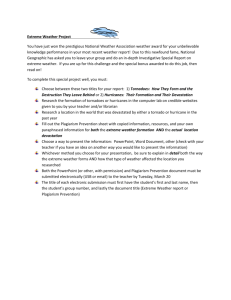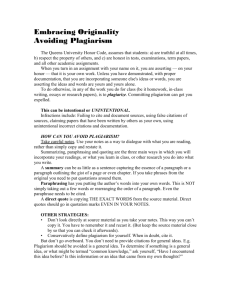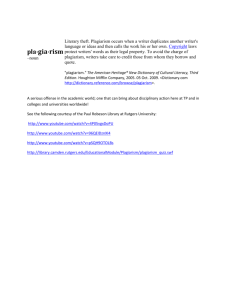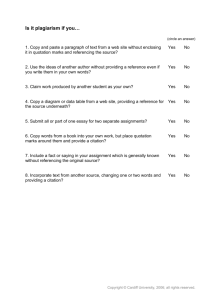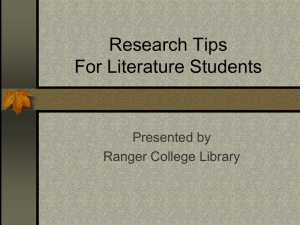PLAGIARISM
advertisement
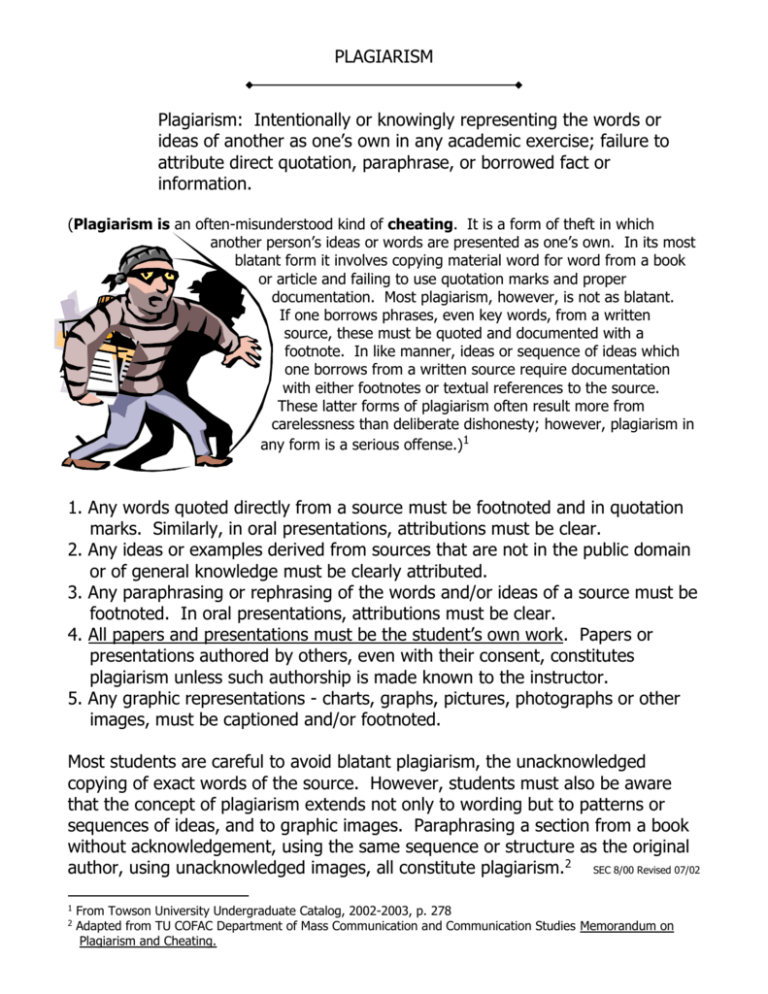
PLAGIARISM Plagiarism: Intentionally or knowingly representing the words or ideas of another as one’s own in any academic exercise; failure to attribute direct quotation, paraphrase, or borrowed fact or information. (Plagiarism is an often-misunderstood kind of cheating. It is a form of theft in which another person’s ideas or words are presented as one’s own. In its most blatant form it involves copying material word for word from a book or article and failing to use quotation marks and proper documentation. Most plagiarism, however, is not as blatant. If one borrows phrases, even key words, from a written source, these must be quoted and documented with a footnote. In like manner, ideas or sequence of ideas which one borrows from a written source require documentation with either footnotes or textual references to the source. These latter forms of plagiarism often result more from carelessness than deliberate dishonesty; however, plagiarism in any form is a serious offense.)1 1. Any words quoted directly from a source must be footnoted and in quotation marks. Similarly, in oral presentations, attributions must be clear. 2. Any ideas or examples derived from sources that are not in the public domain or of general knowledge must be clearly attributed. 3. Any paraphrasing or rephrasing of the words and/or ideas of a source must be footnoted. In oral presentations, attributions must be clear. 4. All papers and presentations must be the student’s own work. Papers or presentations authored by others, even with their consent, constitutes plagiarism unless such authorship is made known to the instructor. 5. Any graphic representations - charts, graphs, pictures, photographs or other images, must be captioned and/or footnoted. Most students are careful to avoid blatant plagiarism, the unacknowledged copying of exact words of the source. However, students must also be aware that the concept of plagiarism extends not only to wording but to patterns or sequences of ideas, and to graphic images. Paraphrasing a section from a book without acknowledgement, using the same sequence or structure as the original author, using unacknowledged images, all constitute plagiarism.2 SEC 8/00 Revised 07/02 1 2 From Towson University Undergraduate Catalog, 2002-2003, p. 278 Adapted from TU COFAC Department of Mass Communication and Communication Studies Memorandum on Plagiarism and Cheating.


